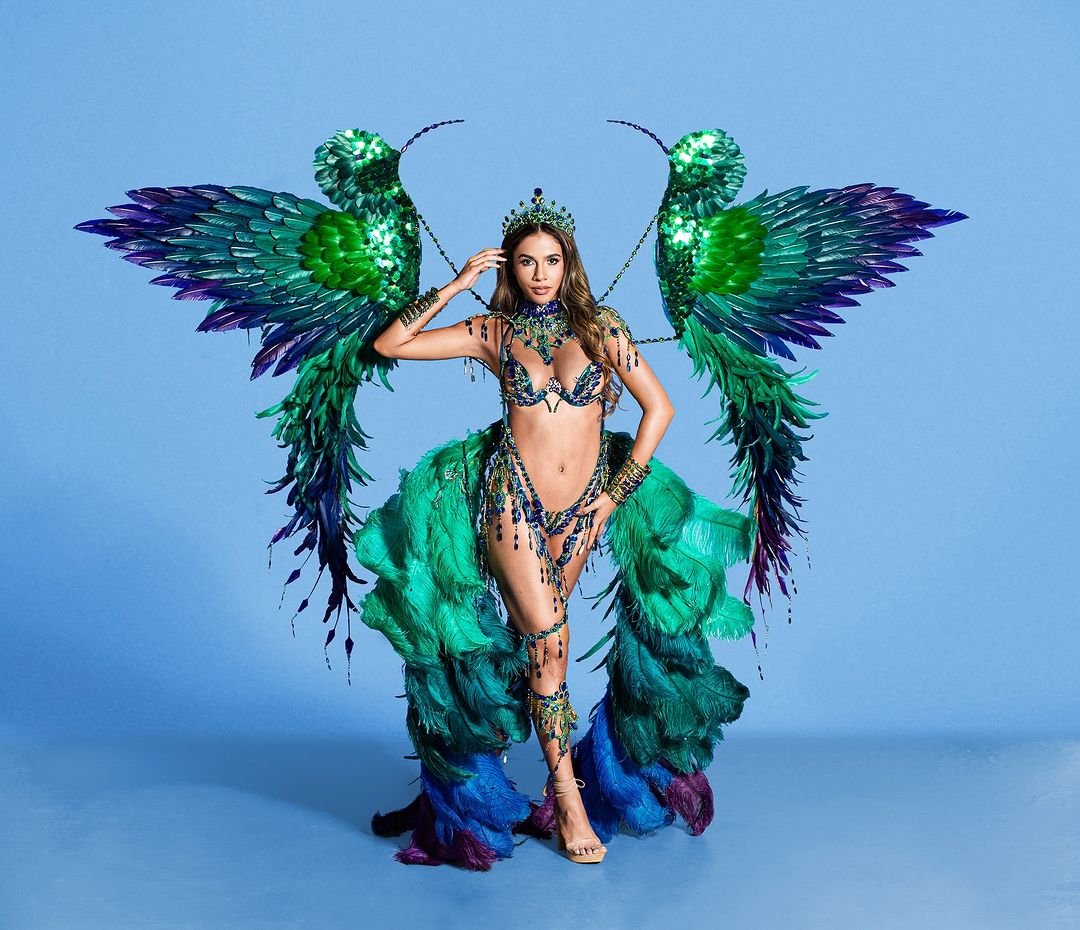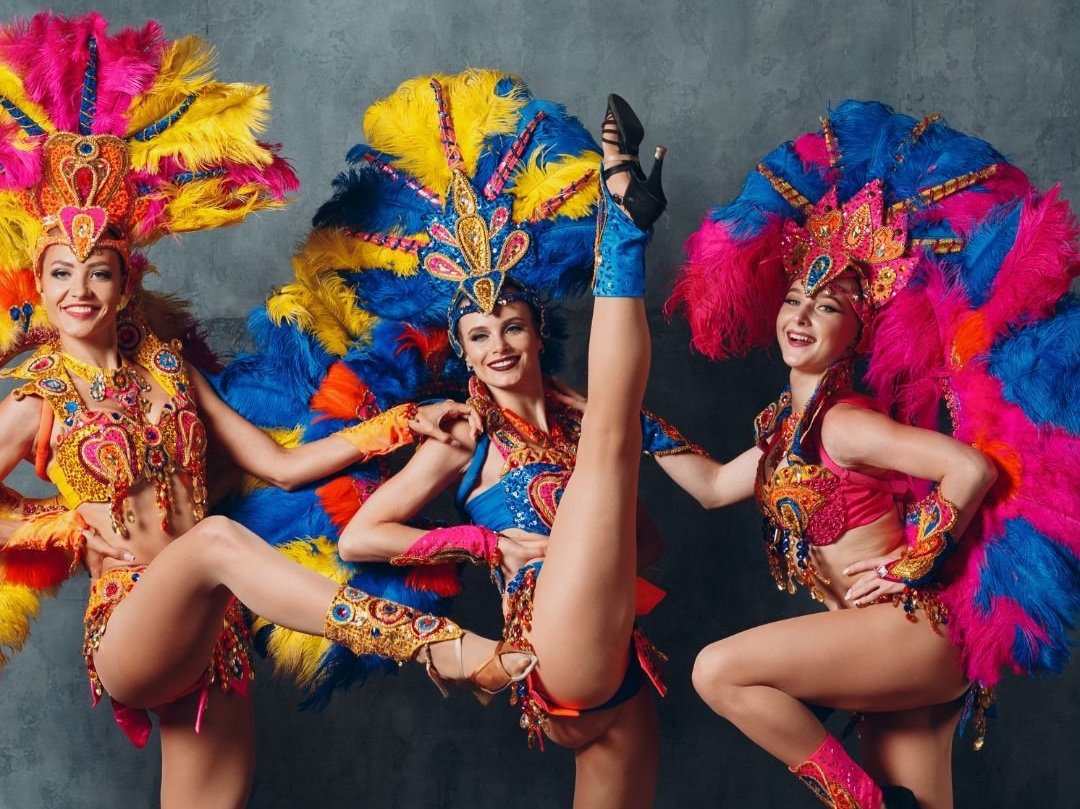History of Caribbean Carnival
The history of Caribbean Carnivals is much more complex than many realize. Caribbean Carnival celebration has origins based in colonialism and religious conversion as Europeans settled in the Caribbean Region. It has now become a festival and celebration tied to freedom and the emancipation of slavery. For those who celebrate, it is a yearlong event, with preparations, festivities, Fat Tuesday, music and dance, and much-needed recovery. Costumes and masks and performances can take an entire year to perfect, with artists showcasing their traditional costumes and crafts.
Caribbean Carnivals are now celebrated around the world, with huge celebrations in Canada, U.S, Notting hill in the United Kingdom. Although it is easy to become distracted by the incredible, colorful costumes, music, and dance, it is important to remember the history and cultural significance of these spectacular celebrations.
Egypt and Europe
Historians believe Ancient Egyptians were the first to celebrate Carnival as a pagan festival, which was eventually adopted by the Greeks and Romans. Incorporated into the Roman Catholic Church, Carnival was celebrated in Italy, before gaining traction in France and Spain. The word Carnival has Latin origins, Caro being the Latin word for “meat” or “flesh,” and vale meaning “farewell” – the interpretation is “farewell to flesh.” The “farewell to flesh” is in reference to the practice in Catholicism to stop eating red meat during Lent, from Ash Wednesday until Easter. Carnival was a celebratory feast lasting from the Sunday to Tuesday prior. In the late 18th century, European settlers, British nationals, and African slaves came to settle in Trinidad and Tobago. They brought with them this annual pre-Lenten Carnival celebration of extravagant Fat Tuesday masquerade balls. With time elements of the various cultures combined, which encompassed carnival traditions from each ethnic group.
African Influence
People from Africa were brought to the Caribbean as slaves. The Yoruba people were taken from Nigeria and the last to arrive on the islands. Their strong culture dominated the Caribbean Africans, and they were able to practice their religion by pretending they were praying to Catholic saints. This allowed their culture to continue despite oppression: this new culture combined European practices with West African traditions. One of the new cultural traditions was the celebration of the Canboulay. The Canboulay was a night-time parade-of-sorts, which gathered slaves to put out sugar cane fires at a nearby sugar cane plantation. Canboulay was the Creole word for burning canes. Along this march to put out fires, they would sing, dance, drum, stick fight, and light torches. The Canboulay drummers were Yoruba religious figures known as Shango or Rada, today known as Orisha.
Trinidad
Caribbean Carnivals, as we know them today, really started to take shape in 1834 with the end of slavery. The Canboulay and European Mardi Gras masquerade combined to take on a modern form of Carnival. Through music, dress, and dance, those previously enslaved now celebrated their native culture. The festival became a fusion of African influence and heritage with Creole culture. Carnival became a celebration of freedom. To this day, Trinidad has the most notorious Caribbean Carnivals and, from the very beginning, has celebrated with four elements; calypso/soca (song), steelpan (music), mas (masquerade balls), and wine (dance). The Canboulay stick-fighting was also an important element of early Carnival, which became banned by British authorities. Instead of the traditional stick-fighting, they used bamboo sticks, which were beaten together until those too were banned. In 1937, the bamboo was replaced with frying pans, dustbin lids, and oil drums that were banged together. These were referred to as steelpans and a major part of Trinidadian music.
The British tried to abolish these new celebrations, creating laws and propaganda to stop them. Parties required a special license, and the British prevented the use of drums and torches known as flambeaux with a series of new laws. Representing so much more than a pre-Lenten festival, the people fought to defend Carnival, with many of these struggles ending in death. The most infamous event being the Canboulay Riot in Port of Spain in 1881. Captain Arthur Black was brought into office under the order to rid Trinidad of Canboulay festivities. In 1881 he issued an attack on Canboulay masqueraders during these riots. In 1884, he turned to the South and issued a plan to attack those celebrating Carnival. In Princes Town, police officers and Special Constables were armed with rifles, waiting for the events to begin. They intended on waiting until a Canboulay band passed before them on the street. The Canboulay was prepared and knew the plan and headed straight for the police station, unafraid. One of the Canboulay died with three injured. Similar events occurred throughout Trinidad as the British attempted to end Carnival once and for all.
Due to the sacrifices and fight against England’s attempts to suppress Carnival, it has survived and become the celebration we know today. Originally Carnival was held three days prior to Ash Wednesday, from Sunday to Tuesday. However, due to a great deal of criticism and conflict over-celebrating on the Sabbath (Sunday), Carnival was restricted to Monday and Tuesday only in 1943. Carnival was also banned during World War II but was then allowed to continue.
Across the Caribbean
Carnival spread through the Caribbean, each island incorporating their own cultures into the celebrating carnival. Antigua, Dominica, St. Vincent, and the Grenadines, Martinique, Haiti, and others celebrate with local dance, dress, and music at various times throughout the year.
Although similar celebrations, not every Caribbean Carnival are called Carnival, and the dates are different. Saint Lucia celebrates Carnival before Lent; however, in 1999, the Saint Lucian government moved the event to mid-July so it wouldn’t compete with Trinidad and Tobago Carnival. The Antiguan Carnival celebrates the end of slavery and begins at the end of July and is commonly known as Caribana. The festival was previously known as the Old Time Christmas Festival but was changed in 1957 to attract more tourism. The Dominican Republic celebration is held in February, an event that celebrates both religious and military holidays as well.
The length of each celebration varies with the Island as well. Martinique’s Carnival lasts four days and is held just before Lent, where Haitian Carnival (Kanaval) lasts several weeks leading up to Mardi Gras. Bermuda Carnival is the youngest, celebrating its sixth anniversary in June of this year. Bermuda Carnival is also one of the shortest, held on the third weekend in June.
Still considered a Caribbean Carnival celebration, fused with local culture and history, some island’s celebrations have different names and traditions. In the Bahamas, Junkanoo is a parade that has celebrated the emancipation of slavery since 1884. The roots of these traditions are in the secret African societies and African traditions that existed during slavery. This tradition has grown, and in 2015, it was renamed Junkanoo Carnival to capitalize on Carnival tourism.
The Crop Over Festival in Barbados also began in the 17th century. It is a celebration of the sugar cane harvest held at the end of July. This festival has incorporated many of the Trinidad Carnival traditions and is considered the second largest Caribbean Carnival.
St. Vincent and the Grenadines celebrates Vincy Mas, with a similar origin story as Trinidad. Vincy Mas is a vibrant celebration usually held on the first Monday and Tuesday of July. The main event is J’Ouvert when a large band kicks off the beginning of Vincy Mas.
Cayman Island, Batabano is a salute to Cayman’s turtling heritage – the word “Batabano ” is a Caymanian term meaning the tracks left in the sand by sea turtles. Finding these tracks was – and still is – a reason to celebrate, thus Cayman Carnival Batabano!
Bacchanal, celebrated in Jamaica, occurs in April. This event was formed by local Carnival groups in 2000 after a hurricane prevented them from traveling to Trinidad. It celebrates Jamaican flavor and culture while including traditional calypso and soca music.
Today
Caribbean Carnival is celebrated annually in countries around the world. The birthplace of modern Carnival, Trinidad, and Tobago, is the largest Caribbean Carnival. In 2018, just over 30,000 tourists traveled to the island to take part in the Carnival. It is a pre-Lenten celebration beginning on the Monday before Ash Wednesday. A number of events make up Carnival, including the band launch fetes, a parade, limbo completion’s, costumes, and stick-fighting, all incorporating calypso and soca music. There are music and costume competitions with large prizes to be won. There are celebrations for the entire family, with Kiddies Carnival events running during the month prior. Carnival history is incorporated into many school curriculums as well.
Major Caribbean Carnival’s are celebrated in Caribbean countries and internationally with Miami Carnival, Toronto’s Caribana, Notting Hill Carnival, and New York City’s Labor Day Carnival as Caribbean’s around the world get together to celebrate their history and culture.










